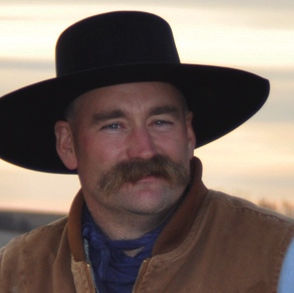Trail of horse tears
I am not really sure what has ramped up the rhetoric about the management, or lack thereof, of the largest horse herd in the United States but the radical cubicle dwellers that think they love horses have gotten loud about saving the horses that, in reality, they are responsible for killing.
I am quite thankful for whatever rekindled this conversation in addressing the ever-growing problem. I regularly address it on the radio with my Monday Rural Route Radio guest Hank Vogler because he not only deals with it but it may be the nail in his coffin as a western rancher.
While that may seem extreme, just this week Vogler shared an example of how he is grazing one federal land permit that is in a herd horse management area. As originally designed, this area was suited to graze 170 horse animal units per month. He said the current population of the horses there is well over 3,000 head. These animals are starving to death and there is complete inbreeding, which does not lend itself to a healthy horse.
Before I go on, it is worthwhile to share the concept behind the Wild Horse and Burro Act of 1971. Prior to that the horses were managed by local ranchers. In fact, I have family friends that would turn studs out each year then round up colts and find valuable uses for the horses including cavalry mounts. That practice stopped in 1971 and it was the beginning of the end of a good life for these horses.
Much of my view of the situation was shaped 15 years ago as I was touring a horse management area near Lovelock, Nevada. We drove up on a satellite stud that was laying in the hot desert suffering from a broken leg. Clearly, if you understand the nature of animals, they are not kind to one another. The right to be “the stud” must be earned, often through a literal life and death battle; not an entitlement. What is really etched in my mind is what the rancher had to do next. He could not get the rifle out of his pickup and do the right thing because that is considered a felony. Instead, he had to call the Bureau of Land Management and notify officials as to the location of the downed horse. In most cases, it would be three to five days before they would arrive to end the suffering of this animal. That is mismanagement, folks, and in anybody else’s herd, that would be grounds for animal abuse and neglect charges.
Ten years ago when I talked about the mismanagement of this program, the annual budget was roughly $85 million. Clearly with a horse population that has grown by 25%, the amount of money needed grows as well. The most recent report by the BLM to Congress shares these details:
“Within the Land Resources activity, the budget proposes $116.8 million for the BLM’s Wild Horse and Burro Program—a $15.3 million increase over the FY 2020 enacted level—to address wild horse and burro herds on public lands, and provides clear direction to mitigate the unsustainable growth rate. It is consistent with Congressional direction to pursue a nonlethal management strategy.
The Bureau continues to assess all managerial tools, including internal policies, procedures, and regulations, that could help reduce costs and administrative burdens in the absence of additional resources beyond the President’s FY 2021 Budget, and within the program’s non-lethal management constraints.”
I have yet to meet a rancher who wants the horses completely removed. In fact, ranchers will tell you that the multi-species grazing concept is healthy for the ecosystem. The lack of proper management in this incident, however, is destroying the range. I will also add had it not been for the improvements these ranchers made to the range, Mother Nature would have already killed off all of the wild horses.
We need an immediate solution to this complete lack of sound herd management and lack of livestock husbandry skills. We need to remove the restrictions that have been placed on where those horses can go after removal from the range. The Adopt a Wild Horse program has been a complete failure. I have long proposed that selling a hunting license for the satellite studs would generate revenue to assist in offsetting the costs. It is so easy to say that we should round them up and sell them for harvest in Mexico or Canada but honestly they are not in good enough body condition to even do that. It is a severe problem and thanks to the loud folks who don’t understand the cycle of life, we have opened the dialogue again and we need leadership that leads to solutions.
These horses deserve to run the ranges of our great nation but they must also have the care and management necessary to ensure that they live healthy, well-nourished lives so they can thrive and propagate genetics for future herds. It is our taxpayer dollars that are funding this egregious, cruel mismanagement and it deserves a complete overhaul. Leaders of this program must be guided by sound science and livestock husbandry skills and not emotionally driven, unsuccessful policies or the wild horses of our country will soon be a thing of the past.
Editor’s note: Trent Loos is a sixth generation United States farmer, host of the daily radio show, Loos Tales, and founder of Faces of Agriculture, a non-profit organization putting the human element back into the production of food. Get more information at www.LoosTales.com, or email Trent at [email protected].
